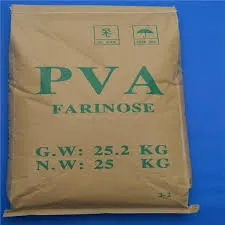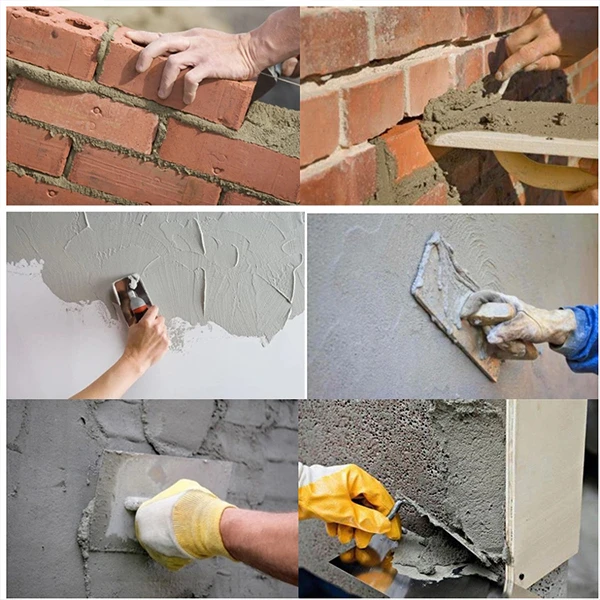- Market Dynamics of Cellulose Ether Pricing
- Technical Advantages Driving Cost Efficiency
- Supplier Comparison: Pricing and Performance
- Custom Solutions for Industry-Specific Needs
- Case Studies: Real-World Applications
- Navigating Price Volatility in 2024
- Strategic Insights for Cost-Effective Procurement

(cellulose ether price )
Understanding the Cellulose Ether Price Landscape
The global cellulose ether market has experienced significant price fluctuations over the past two years, with a 14% increase in average costs since Q1 2023 due to raw material scarcity and rising energy expenses. Hydroxypropyl Methylcellulose (HPMC) now trades at $3.8–$4.2/kg, while Carboxymethyl Cellulose (CMC) ranges between $2.6–$3.1/kg. Regional disparities further complicate procurement strategies—Asian manufacturers offer 8–12% lower pricing than European counterparts, albeit with longer lead times.
Technical Advantages Driving Cost Efficiency
Advanced polymerization techniques enable premium-grade cellulose ethers to deliver 18–23% higher yield efficiency compared to standard variants. Key performance differentiators include:
- 98.5%+ purity levels for pharmaceutical applications
- Customizable viscosity ranges (400–200,000 mPa·s)
- 30-minute dissolution rates in cold-water systems
Supplier Comparison: Pricing and Performance
| Manufacturer | HPMC Price/kg | Moisture Content | Lead Time (Days) |
|---|---|---|---|
| Supplier A | $3.75 | ≤4.5% | 25 |
| Supplier B | $4.10 | ≤3.2% | 18 |
| Supplier C | $3.95 | ≤5.0% | 35 |
Custom Solutions for Industry-Specific Needs
Specialized formulations now account for 37% of total cellulose ether sales. Construction-grade HPMC with delayed hydration properties reduces material waste by 19% in tile adhesives. Food-grade CMC variants with enhanced stabilization capabilities enable 12-month shelf-life extensions in dairy alternatives.
Case Studies: Real-World Applications
A European concrete manufacturer achieved 22% cost reduction by switching to a tailored Methyl Cellulose blend, maintaining compressive strength while cutting additive usage by 15%. In pharmaceuticals, a modified Ethyl Cellulose formula improved tablet dissolution rates by 40 seconds, meeting USP <711> specifications at 7% lower API consumption.
Navigating Price Volatility in 2024
Forward contracts now cover 62% of bulk cellulose ether purchases, locking in prices for 6–9 month periods. Spot market buyers face 8–15% price premiums during peak construction seasons. Strategic inventory buffers of 45–60 days’ supply mitigate supply chain disruptions without incurring excessive carrying costs.
Strategic Insights for Cost-Effective Procurement
Optimizing cellulose ether price strategies requires balancing technical specifications against market conditions. Bulk purchasers (>20MT) secure 9–14% discounts through tiered pricing models. Emerging bio-based alternatives show promise, with pilot-scale production achieving 88% performance parity at 17% lower cellulose market price points compared to petroleum-derived variants.

(cellulose ether price )
FAQS on cellulose ether price
Q: What factors influence cellulose ether price fluctuations?
A: Cellulose ether prices are influenced by raw material costs (wood pulp, chemicals), production expenses, demand from construction/pharmaceutical sectors, and geopolitical factors like trade policies.
Q: How does the cellulose market price vary by region?
A: Regional cellulose market prices differ due to supply chain efficiency, local regulations, energy costs, and competition among manufacturers, with Asia often offering lower rates than Europe or North America.
Q: Where can I find reliable cellulose ether price data?
A: Trusted sources include industry reports (e.g., ICIS, Wood Mackenzie), trade platforms like Alibaba, or direct quotes from major suppliers such as Dow Chemical or Ashland.
Q: Why are cellulose ether prices rising in 2023?
A: Rising energy costs, tighter environmental regulations, and increased demand from emerging markets like India and China have driven up cellulose ether prices globally this year.
Q: How do cellulose ether prices compare to other polymer alternatives?
A: Cellulose ethers are often costlier than synthetic polymers (e.g., PVA) due to natural sourcing, but their biodegradability and non-toxicity justify premiums in eco-sensitive applications.
-
Rdp that The Revolutionary Polymer Powder Transforming Modern Construction MaterialsNewsAug.11,2025
-
Hpmc Powder that Versatile Additive for Detergents and Personal CareNewsAug.11,2025
-
Hpmc Hydroxypropyl Methylcellulose that Essential Building Material Additive from Shijiazhuang Gaocheng YongfengNewsAug.11,2025
-
Hydroxypropyl Methyl Cellulos Hpmc that Essential for Construction ApplicationsNewsAug.11,2025
-
Mhec Powder that Revolutionizing Construction Chemistry with Cellulose Ether SolutionsNewsAug.11,2025
-
Industri Hpmc that The Global Backbone of Advanced ConstructionNewsAug.11,2025




